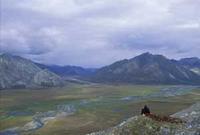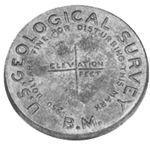Voters To Decide Property Dispute
 On November 8, voters in Texas will go to the polls to decide a variety of issues. Among the more unusual items on the ballot in the Lone Star State is the resolution of a property dispute. Proposition 8 would allow the Texas General Land Office to give up any state claim on an alledged land vacancy in east Texas. Developer W.L. Dixon and former land surveyor Barton McDonald claimed that the 4,662 acre King Survey was filed in error back in 1838 and that all of the land still belongs to the state. If the vacancy had been accepted, it would have created clouds on titles to more than 1,000 property owners. GLO Commissioner Jerry Patterson ruled that there was no vacancy in the King Survey. If approved by voters, the constitutional amendment would presumably put an end to any court appeals to the commissioner's ruling.
On November 8, voters in Texas will go to the polls to decide a variety of issues. Among the more unusual items on the ballot in the Lone Star State is the resolution of a property dispute. Proposition 8 would allow the Texas General Land Office to give up any state claim on an alledged land vacancy in east Texas. Developer W.L. Dixon and former land surveyor Barton McDonald claimed that the 4,662 acre King Survey was filed in error back in 1838 and that all of the land still belongs to the state. If the vacancy had been accepted, it would have created clouds on titles to more than 1,000 property owners. GLO Commissioner Jerry Patterson ruled that there was no vacancy in the King Survey. If approved by voters, the constitutional amendment would presumably put an end to any court appeals to the commissioner's ruling.Unlike most states, Texas' public lands were never a part of the U.S. Public Land System. Instead of being divided up into Townships and Sections, the public lands of the state were distributed in a random system where every grantee could locate his land grant wherever he wanted and in whatever configuration he preferred. The result is a hodge podge of land grants that follow no system or plan. This system combined with the less precise survey instruments of the mid 1800's has left thousands of strips of land called, "vacancies," between these original land grants. The GLO estimates that approximately 1,000,000 acres of land lies in these vacancies and in the beds of navigable rivers. Little attention was paid to these vacancies until the discovery of oil. The current dispute hinges on mineral interests as well. If the vacancy had been approved, the applicants, Mr. Dixon and Mr. McDonald would be entitled to a share of the mineral rights.
Complete article from Longview News-Journal.
























